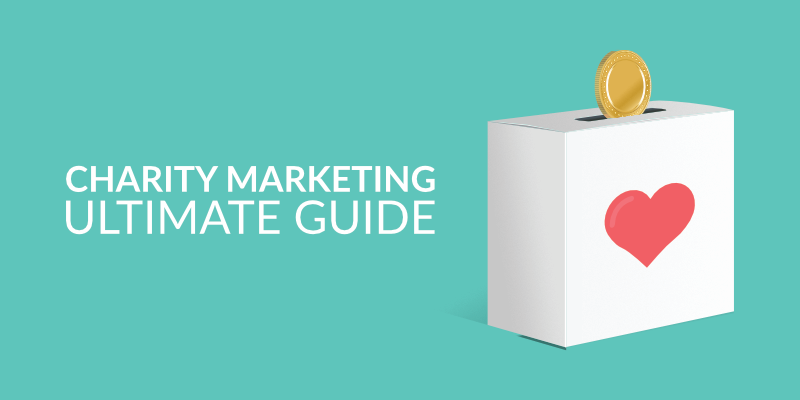
There are over 168,000 registered charities in England and Wales. Many compete over the same issues. Making a £75bn+ contribution to the economy, this is a highly competitive sector. Add to that a series of high profile scandals rocking the press over recent years, and it’s never been more important to have a comprehensive marketing strategy in place.
Audiences are also becoming increasingly media savvy, and the introduction of the GDPR means organisations can’t take data handling for granted anymore. All this means that now is the time to refresh the basics of essential charity marketing techniques to get your promotional efforts fit for purpose.
Search engine marketing for charities
Search engines are a crucial way for potential donors to find you. But there are lots of charities out there, all competing in the search rankings. To understand how to fight to the top of search results, we need to break things down a little.
SEO tools are essential for elevating a charity’s online visibility. Charities can utilise tools such as Moz, SEMrush, and Ahrefs to refine their digital strategies. These platforms allow users to identify relevant keywords, analyse competitors, and monitor site performance. With insights from these tools, charities can tailor their SEO efforts to improve rankings and boost engagement. Regular audits with these tools help in adapting strategies to the shifting landscape of digital marketing.
By incorporating SEO tools, charities can efficiently optimise their content with the most impactful keywords. Tools like Google Keyword Planner offer insights into keyword popularity and competition, ensuring that the right terms are targeted.
Additionally, these tools can highlight unexpected opportunities, revealing niches or areas where the charity can rank more easily. Implementing these insights ensures that potential donors encounter the charity first when searching for relevant causes online.
Let’s say we’re looking for homelessness charities in Wales. So we jump on a search engine like Google.
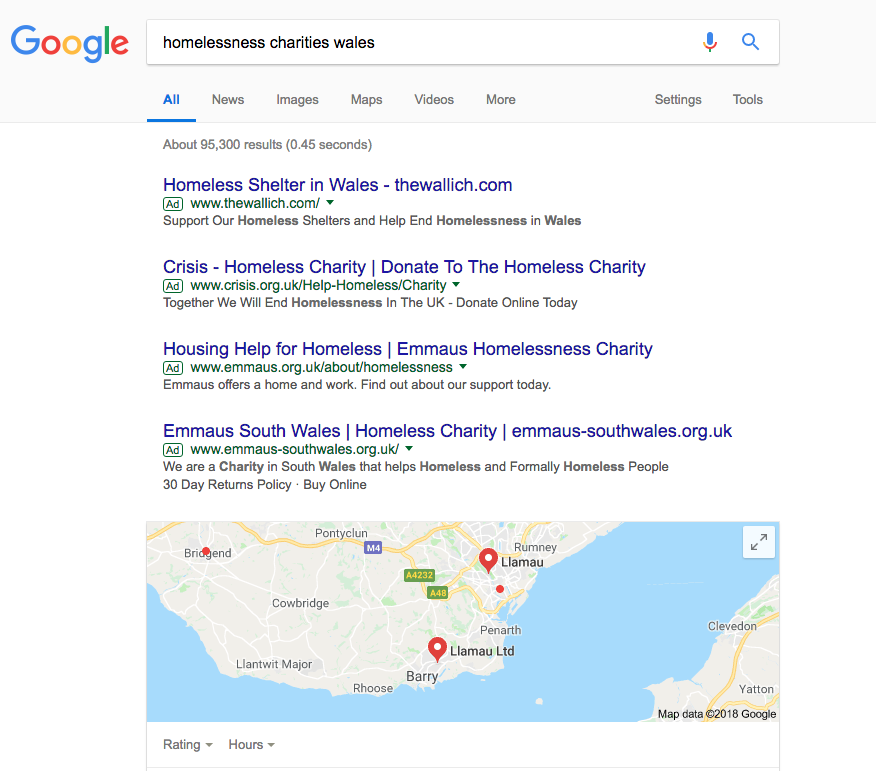
Using paid ads for charity promotion
The first thing we see are a bunch of paid-for ads on Google, and a map locator.
Ofcom tells us that although a majority of people understand that these ads only appear in search because they have been paid for, over 40% of people think that they are selected because they are the most relevant, or most searched for ads. This means placing ads here gives you excellent exposure.
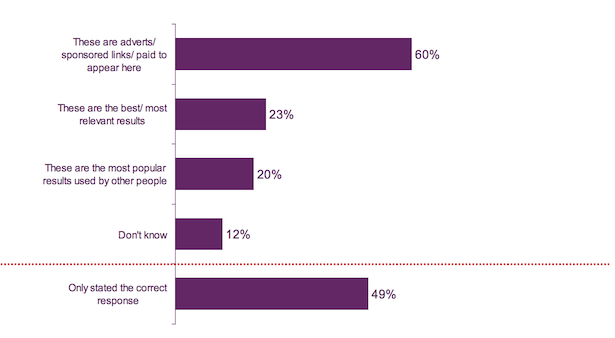
Of course, you still need to make sure you design your ads carefully. They should look as much like traditional web pages as possible, with lots of attention paid to format.
The trick is to keep it simple but clearly convey what you’re all about.
Take a look at ads in your charity’s niche and look at how they are structured. Here’s how Crisis structure their google ad:
[Name of charity] – [Function of charity] – [Call to Action ]

The meta description (the text below the URL) of their ad is a simple slogan plus a reiteration of their CTA (call to action) asking people to donate.
It’s worth looking at how you can set your ad apart from the competition. Let’s look at the following example.

The Wallich have gone with the angle, “support our homeless shelters and help end homelessness in Wales.” This makes an appeal to national pride, highlighting how people can give practical support, and it has the grand ambition of ending homelessness, which plays to people’s social values.
Optimising Google Business for charities
Beneath the paid ads we have the Google Business search results.
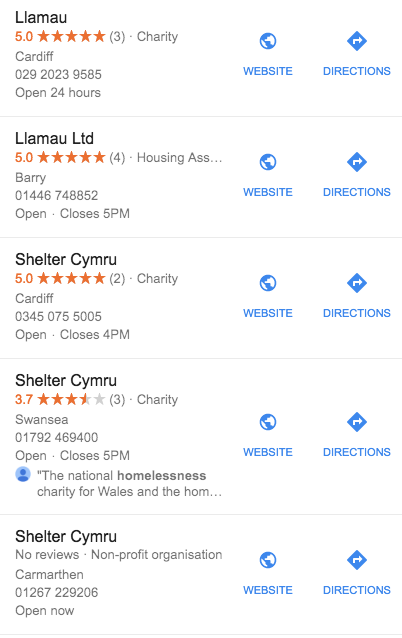
These are organisations registered with Google Business (an essential step for all marketers). You’ll notice how prominent the starred user reviews are in these results. It’s really important that you encourage supporters to leave reviews. The more reviews you have, and the better your average score is (you really don’t want to fall below 4 stars) the more attractive your organisation will look. Take the time to fully optimise your Google Business listing.
Make sure you fill in all the information Google asks for and ensure that it is kept up to date. This data is used to help Google understand where to rank your business and makes for a positive user experience.
You have an option to upload photos; these should showcase your business. It’s amazing how few organisations properly make use of this feature. By doing so you will gain advantage over the less thorough competition.
It’s important to look at your listing from various devices, from laptops to desktops, phones to tablets. Make sure your images look good. What looks better, this…

…or this?…

Even though Shelter is the more famous brand, we have to admit Llamau looks more human, approachable, and well-presented than them. And this is actually where smaller, less well known charities can differentiate themselves from their bigger rivals, who can sometimes appear less approachable and more anonymous. It’s all about paying attention to the small details and making your brand look as approachable and appealing as possible.
Using organic search for charity marketing
Beneath the Google Business listings are the organic search results.
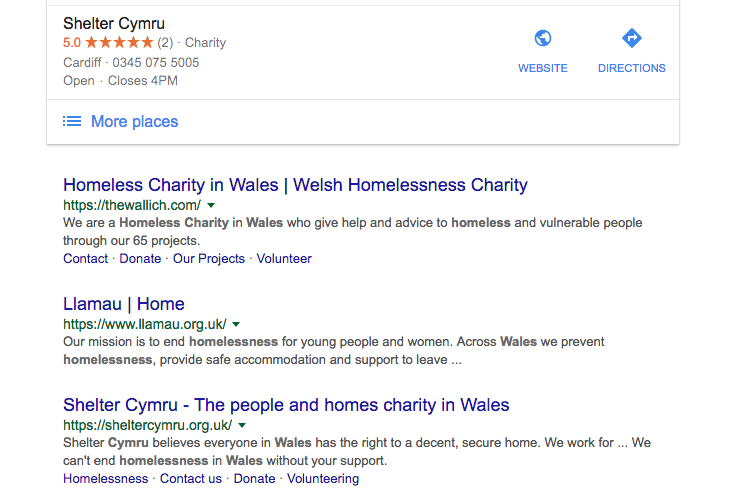
As with the ads, pay attention to how you format your web pages to help your page rankings. The page title needs to clearly signal your brand and any taglines you have…
Brand = “Shelter Cymru”
Tagline = “The people and homes charity in Wales”
Beneath that you need a professional looking URL, with the .org ending.
Beneath the URL we have the meta description, the few words that you read before clicking a link.
Note you only have around 20-25 words to play with. So try and get a summary of your brand into that space. Shelter have a good opening salvo…
“Shelter Cymru believes everyone in Wales has the right to a decent, secure home.”
Try and get at least one complete sentence into the meta description, like Shelter have done. That means you’ll definitely convey some helpful info to users. And it won’t matter so much if they can’t read the full description, they’ll get the gist and they may even be curious enough to click through to find out more.
Again, bear in mind that Google uses the meta description to help rank your page, so make good use of it.
The Role of Storytelling in Charity Marketing
Storytelling serves as a powerful means to forge connections with potential donors. By sharing stories of individuals who have benefited from their work, charities can humanise their causes.
This emotional bond encourages donors to contribute, feeling a part of the change. For instance, WaterAid’s storytelling campaigns bring donors closer to real water challenges, boosting empathy and action.
Aligning stories with broader narratives further strengthens a charity’s message, making each contribution resonate with supporters. Integrating storytelling into various formats, such as video content and blog posts, can greatly amplify its impact.
Videos, in particular, have a unique ability to convey emotion and urgency, making them powerful tools for enhancing engagement. Charities can create video stories of events, interviews with beneficiaries, or even live storytelling sessions.
These formats enable charities to connect on a deeper emotional level, fostering a genuine community of supporters invested in the cause’s narrative and mission.
Websites for charity promotion
In an online world with many different content platforms out there, your charity’s website is the central organising hub of your online presence.
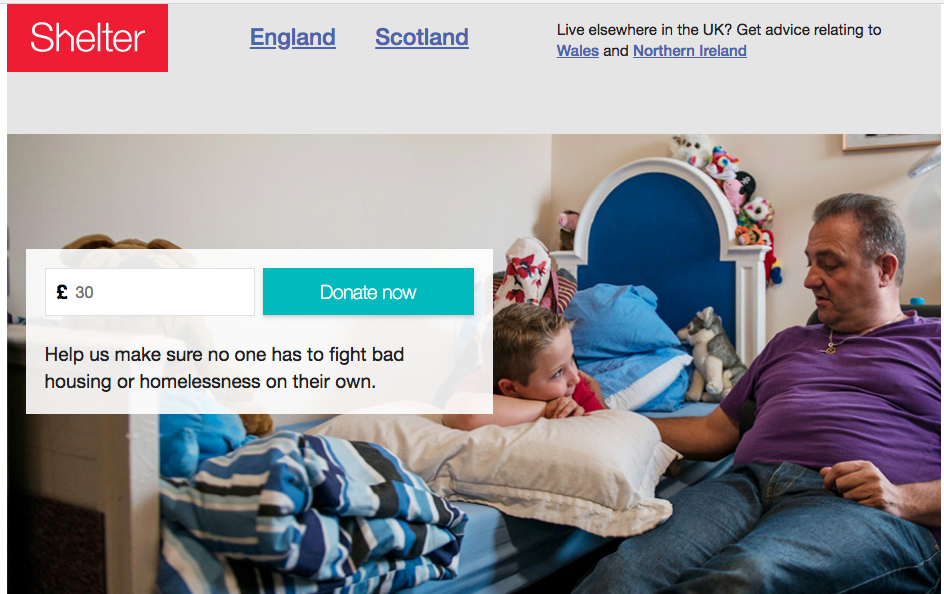
When designing your website, make sure you do your research by taking a look at the websites of the top performing charities. It’s always a good idea to learn from the best.
Think about who your charity is primarily targeted at and what sort of “vibe” you want to go fo.
Do you want the Millennial relatability and hipster chic of Movember?…
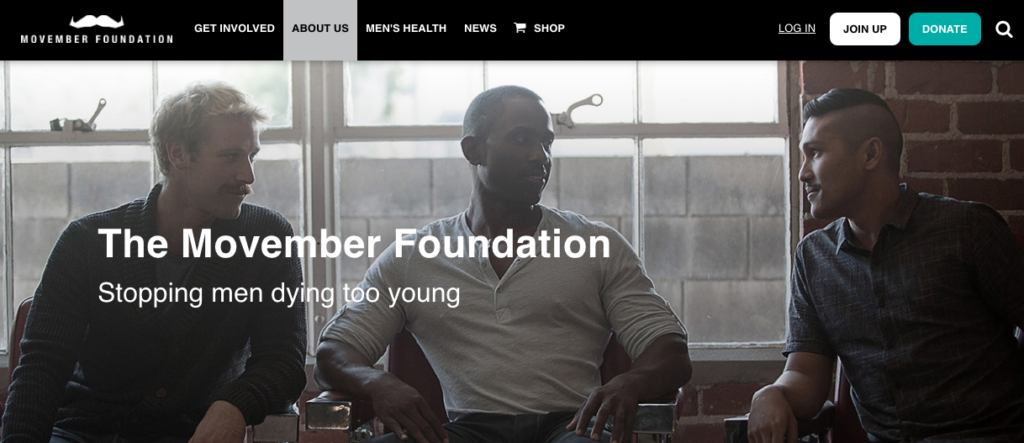
…Or the cross-generational appeal of Cancer Research UK?

It’s a good idea to start with a professional looking ‘hero image’ showing the positive impact your organisation can have on people. Or animals…
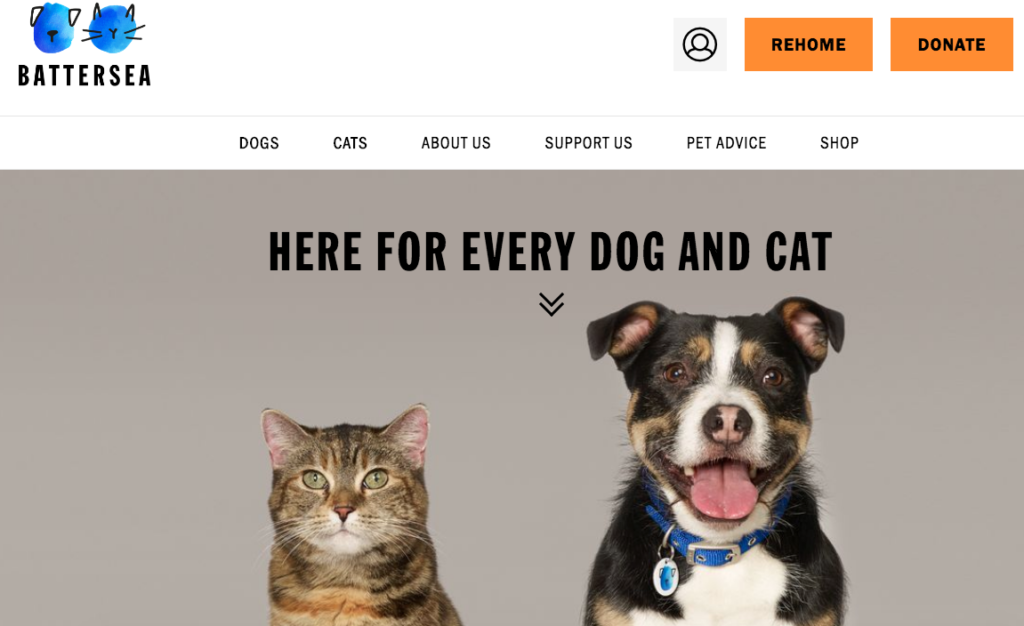
The trick is to make a big, striking impact for users whilst keeping things relatively simple.
Given that you’ll want to make things as streamlined as possible in terms of taking people on a journey from awareness to support, your site should have a ‘something for everyone’ appeal. Check your site has the following basic pages, and that they are easy to find.
- A page for giving donations
- An about page
- Up to date news stories
- Links to current campaigns or events
- Updates on fundraising efforts
- A page explaining what your charity actually does
- Links to social media for easy sharing
You should also run your site through a website checker like Website Grader to make sure it is fully optimised.
It will help you identify any areas where you need to improve.
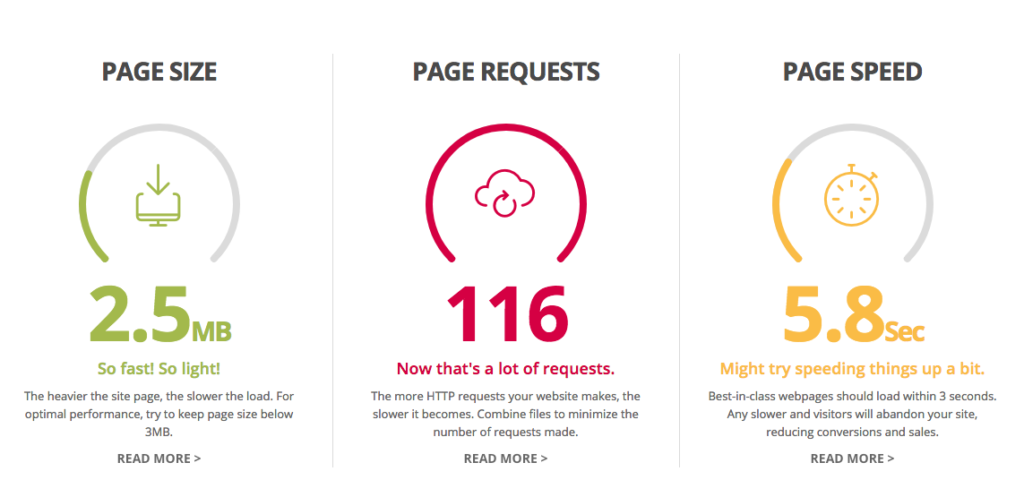
Here are some more things to think about with your site…
- The User Experience (UX); is it simple to navigate, easy to read and great to look at?

- Is it mobile friendly? This is a HUGE deal because most sites are now viewed via mobile!
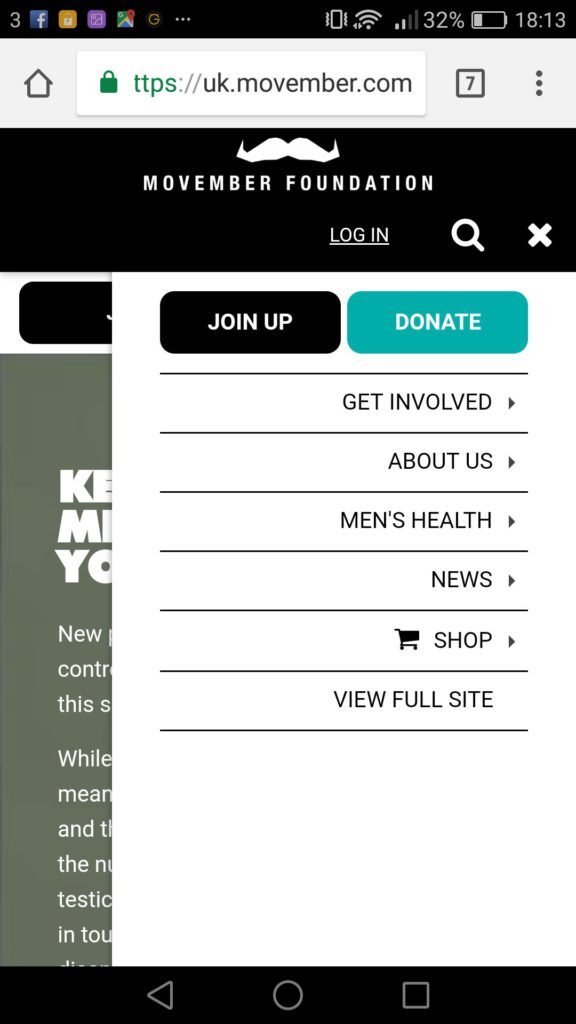
To check if your website is optimised for mobile, head to Google’s mobile test site.
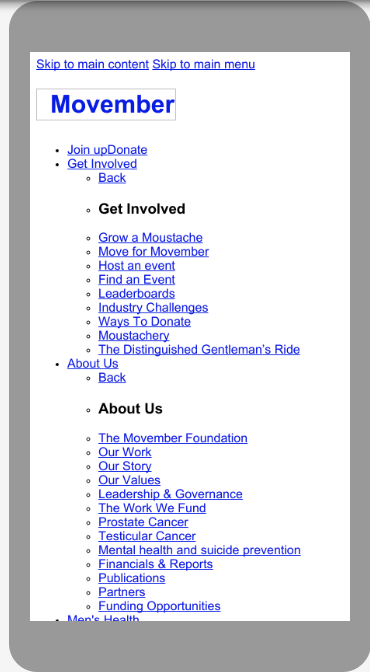
It will analyse how your site is structured for mobile viewing and direct you through any changes you need to make.
Email Marketing Strategies for Charities
Email marketing remains a key component for maintaining donor relationships. Personalised emails can significantly increase engagement by addressing supporters’ specific interests and history.
Charities should engage supporters with regular newsletters, providing updates and showcasing impact. Automated campaigns can nurture new donors without overwhelming them.
Tools like Mailchimp and Constant Contact offer insights into open and click-through rates, helping to fine-tune future emails.
Social media marketing for charities
A lot of your charity’s success will depend on how well you are able to engage with people, especially online where reputations are made and broken.
Essentially, social media marketing is about two things:
Presentation and interaction.
Social provides a way to present up to date information about your charity’s events and activities, and gives you a space to relate to current affairs that resonate with your objectives.
It also provides a way to interact with an audience of likeminded people from which to grow your supporter base.
Picking the right social media platform
Ideally your organisation will have a presence on a wide range of social media platforms. Twitter and Facebook are pretty much no-brainers for all organisations these days, but do research to find which social media platforms suit your needs. For example, if you want to share a lot of visual content, it’s worth considering setting up an Instagram account linked to your Facebook page. But you should definitely have a presence on the usual suspects:
Twitter marketing for charities
To take a look at this in action, let’s jump on the Shelter Twitter.
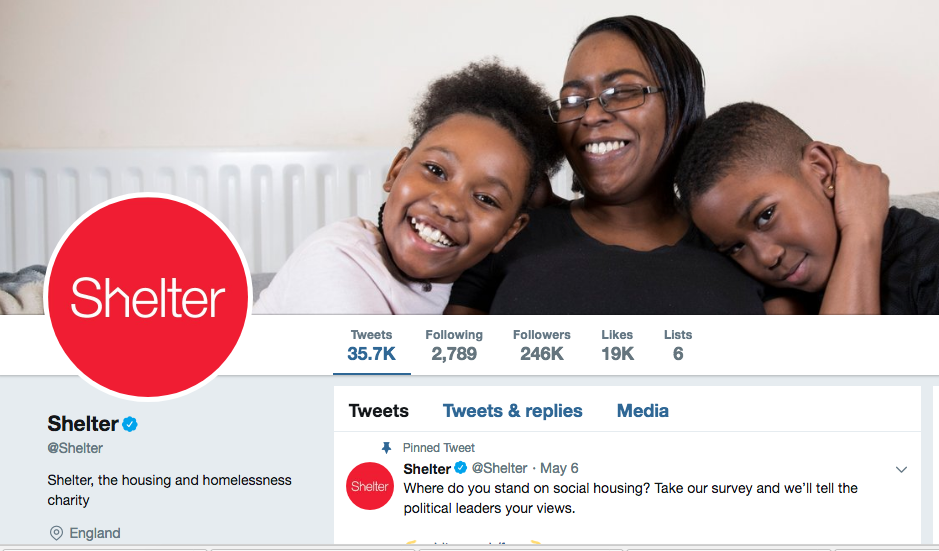
Notice they have a consistent looking, appealing and well designed profile. The cover pic is positive, and has a ‘hero image’ to show how the charity can help people.
Check out: 10 Things Nonprofits Can Do Right Now to Improve Their Social Profiles
They have a well designed, clear logo as their profile pic and a 100% branded handle: @shelter rather than @shelter123 or @the_real_shelter.
Make sure your account name and handle are as close to you brand name as you can get. This makes it easier for people to find you and makes for more coherent branding.
Shelter also have a very straightforward bio describing themselves as “the housing and homelessness charity”. It’s clear and gets straight to the point.
Notice they make use of Twitter’s ‘pinned tweet’ function which lets you can stick an important post to the top of your account. That means anyone who checks out Shelter’s account will see an important headline message, in this case a post on the question of social housing, a very topical and relevant issue for the charity.
Your day to day organisational priorities should help govern which tweets you pin, but they should always be the most relevant thing you’re engaging with at any point in time. For example, any current fundraisers should be pinned to the top.
As well as tweeting posts about their views and activities, Shelter are actively engaging with other Twitter users.


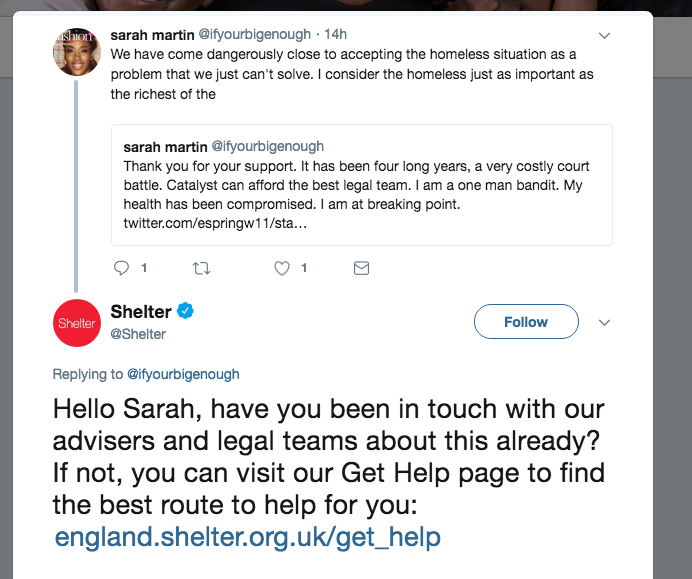
By being engaged and helpful on social media you will attract people towards your organisation and give them a chance to see you in action.
Promoted tweets
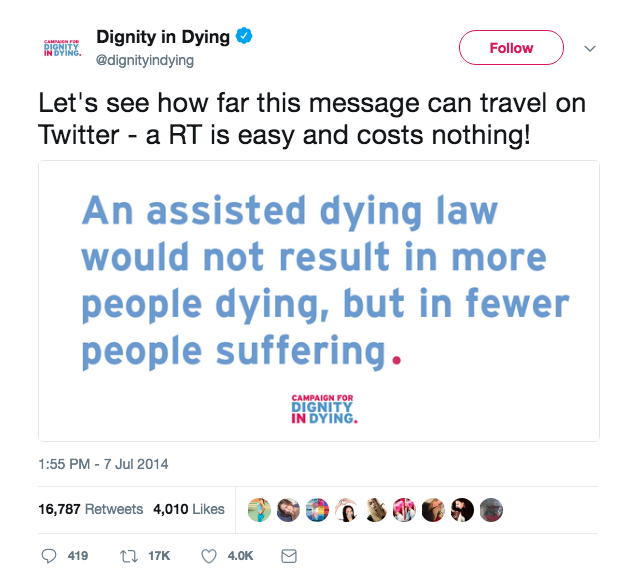
The Dignity In Dying charity got nearly 20,000 retweets and thousands of likes by promoting one of their tweets.
The trick was to promote it once it had already proven to be popular. If you hope that putting money behind a tweet will make it go viral, you may end up misjudging its appeal and throwing money away. Better to promote a post once it already has started to get lots of attention, thereby further boosting its reach.
Facebook marketing for charities
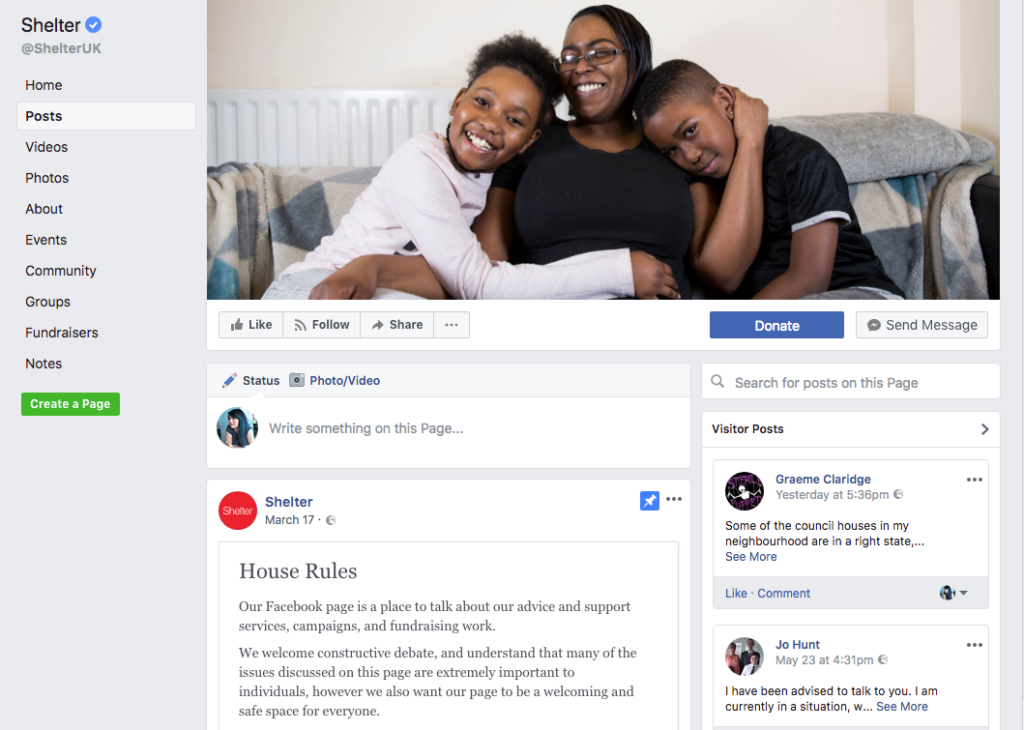
If we look at Shelter’s Facebook page we can see it uses the same design concept as their Twitter account. This is a good way to ensure you have consistency of branding across your online presence.

Their page is populated with regular posts, often sharing content from other publishers like the BBC and the Independent alongside Shelter content. This is a good way to keep your page relevant and encourage user responses; it offers a forum where you can articulate your organisation’s values and demonstrate expertise. Though it’s worth bearing in mind that Facebook doesn’t like you linking outside of their platform, so you’ll want a balance of content with and without external links.
Make sure you have a profile pic that looks professional and clearly conveys your charity’s identity. Using your logo is probably the best idea here.
Your profile pic gives you more room to get creative; maybe using a hero shot of people who have been helped by your charity, or a photo of your organisation doing work in the community.
It should probably feature people (or animals) rather than things… depending on what your charity does. Make sure you use well-lit, professional looking photos that are the right size and resolution for Facebook.
Photos are pretty much the lifeblood of Facebook. They immediately convey emotion and add a sense of excitement/interest to your posts. People like to share and comment on images, thereby increasing the chances of your posts going viral. When uploading videos, use Facebook’s video upload function if possible, rather than pasting links from YouTube or Vimeo. Facebook is extremely reluctant to link to external sites, especially YouTube with who they are chief rivals.
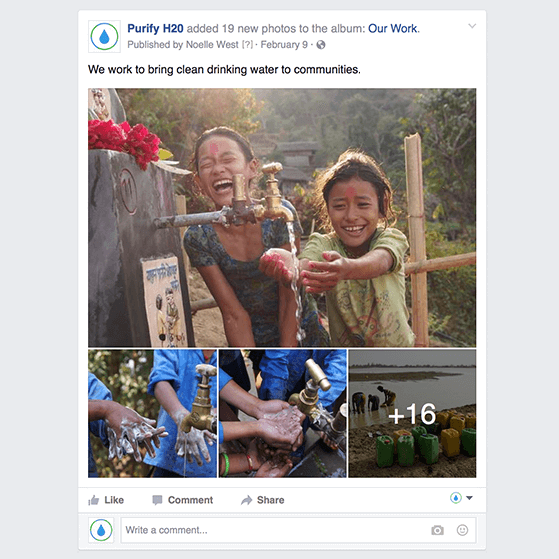
Videos are a great way to showcase what your organisation does and add interest to your Facebook presence.
Facebook ad campaigns for charities
One of the most powerful aspects of Facebook when it comes to charity marketing is its ability to create fine-tuned, laser targeted ad campaigns using a range of app templates. Whether you want to run carousel or video ads, or create a full screen mobile landing pages to drive conversion, there is a template to suit your marketing needs.

This breast cancer awareness campaign by Worldwide Breast Cancer used promoted Facebook posts to reach 7.3 million people in just three posts.
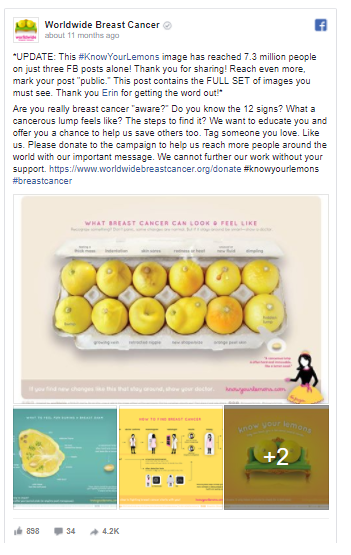
Notice how they structured their Facebook page around the campaign’s branding. This creates a link between a single campaign and the organisation doing the campaigning, and means that users are being exposed to a coherent campaign.
Set up a Facebook ad for your charity
Setting up a Facebook ad is very straightforward with Facebook Ads Manager.
You can easily test your ads with Facebook’s new split test function. Test up to 5 different ads by changing only one significant variable each time, such as Creative, Audience, and Optimisation.
For example, if you test the same ad to different audience demographics, you can tell which demographic performs best. You can then launch an ad safe in the knowledge it will perform optimally.
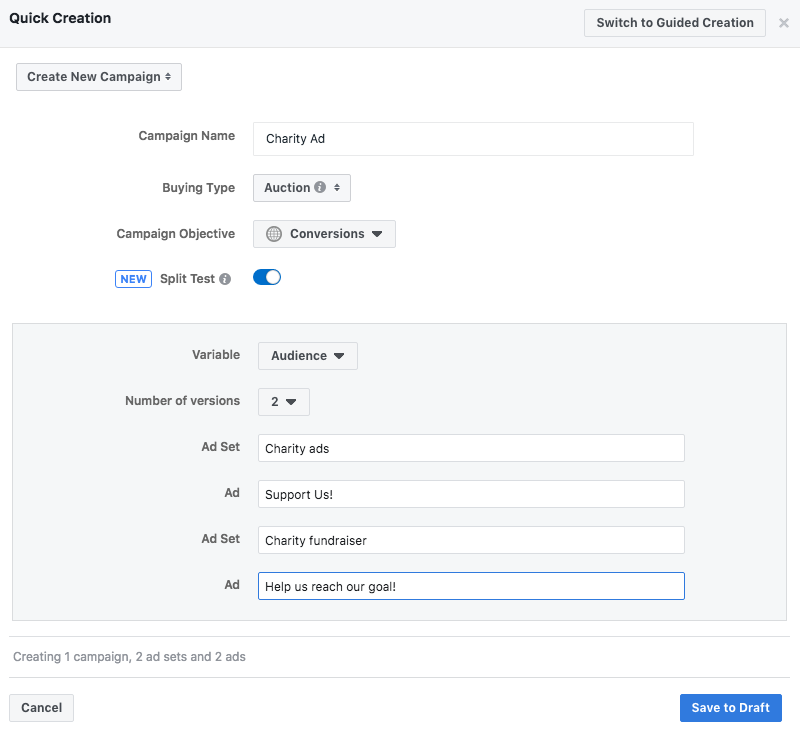
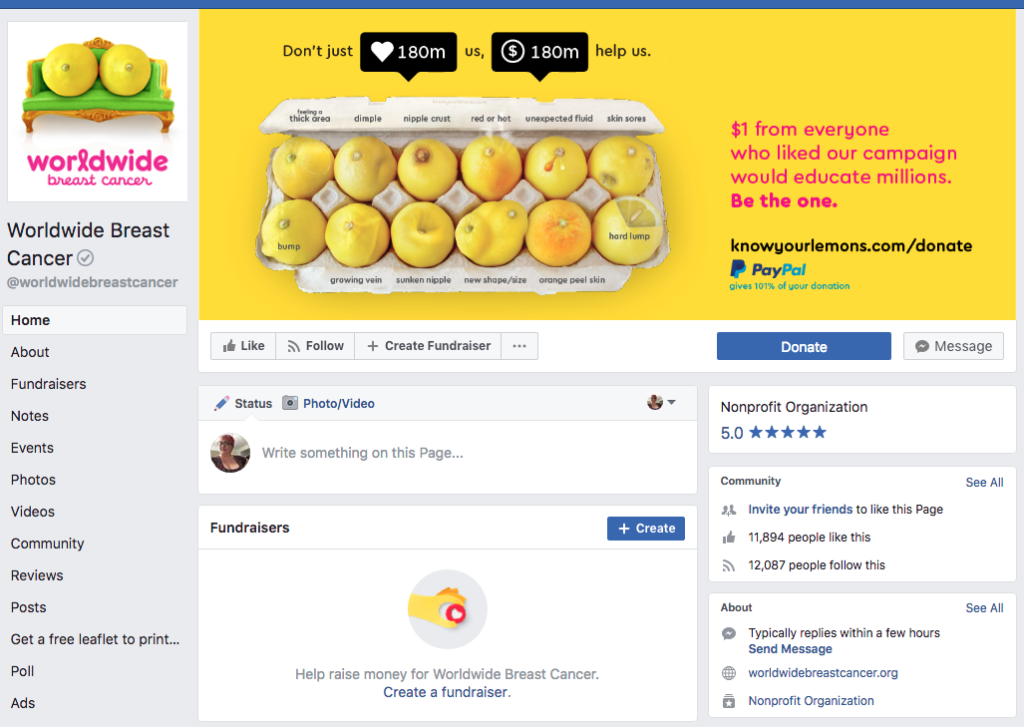
Measuring and Analyzing Marketing Campaign Success
Successful marketing hinges on measuring outcomes and refining strategies. Using tools like Google Analytics and social media platforms’ insights, charities can gauge the effectiveness of their campaigns.
It’s important to track metrics such as engagement rates and conversion pathways. Donor feedback also provides qualitative insights, revealing campaign impact.
By regularly reviewing these metrics, organisations can adapt approaches to maximise future engagement and support. It’s important for charities to not only collect data but also interpret it to extract meaningful insights.
Using heat maps on websites, charities can understand user behaviour, identifying which areas attract the most attention.
A/B testing different campaign elements, such as headlines or calls-to-action, can refine strategies by revealing what resonates best with the audience. These practices, complemented by comprehensive reporting, enable charities to enhance their approach continually, ensuring effectiveness and relevance in a competitive digital landscape.
Leveraging Partnerships and Collaborations
Partnerships can amplify a charity’s reach and resources, leading to greater success. Collaborating with corporations or other nonprofits can open new funding streams and access a broader audience.
For example, Comic Relief’s partnership with Sainsbury’s has led to significant fund-raising through joint campaigns. By aligning goals and pooling resources, these partnerships can showcase shared values and drive wider community impact.
The power of charity campaigns on social media
Remember the Ice Bucket Challenge?

This was a campaign that made iconic use of the viral potential of social media to raise over $113.3 million for the ALS Association since 2014. Its success comes from a range of factors:
- It was structured around a fun, easy to carry out activity that could be shared via a variety of social media formats and involved nominating friends, giving it extra virality.
- It had a memorable hashtag which meant it was easy to curate the content of what was essentially a global campaign.
- The bulk of the campaign featured content that was self-generated by users, rather than centrally administered by a charity.
Movember are also very good at using social media to promote their campaigns. Their USP, encouraging men to grow ‘tashes in November to raise money, lends itself to users sharing images of themselves.

CRUK encouraged participants in their sponsored Race for Life to share photos of them wearing a single pink lace in their shoes, symbolic of the fight against cancer.
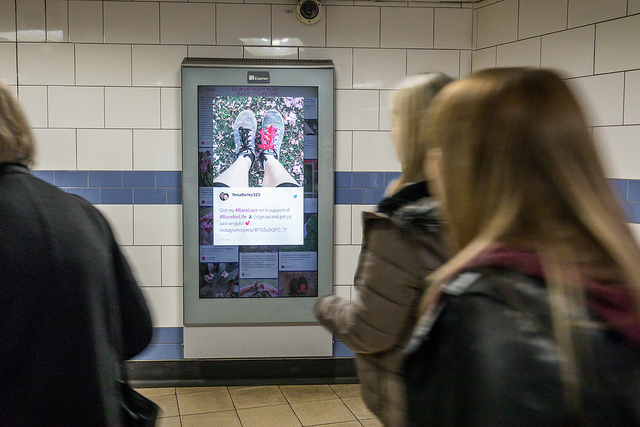
Promoting your charity with a mobile app
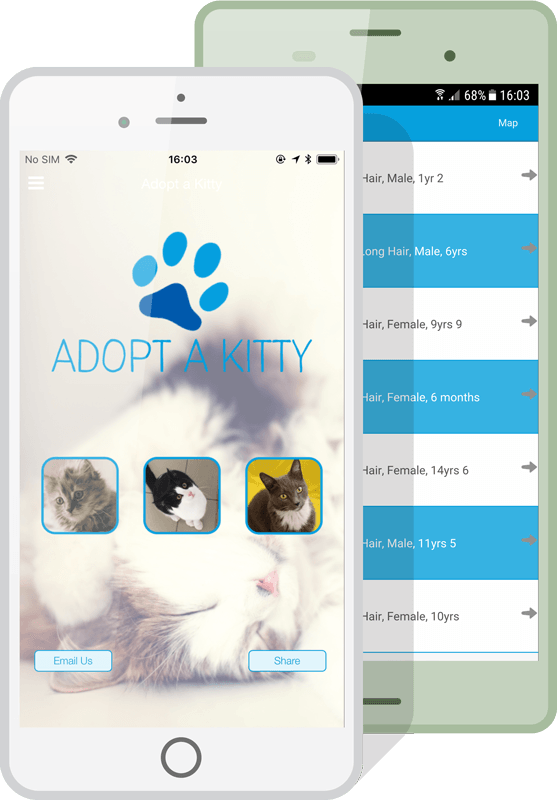
One of the challenges of an increasingly mobile-focussed digital world is how charities can reach out to people on their smartphones. 45% of people will abandon a site if they can’t easily access it on their phones, so it’s a big deal to get your mobile presence right.
Of course your site should be as mobile friendly as possible, but it’s worth investing in an app to take things to the next level.
AppInstitute offer a DIY app creation process for building charity apps. And if you want, we can even help with development. Our charity app template allows you to build a highly customised app that will…
- Take donations online. Amazingly, at present, only 25% of charity apps let users donate online.
- Easy to use contact form and messaging centre for reaching out to your supporters.
- Use push notifications to send updates direct to users’ phones.
- Deliver customised content like video, audio and images to your users.
- Sell merchandise via an in-app mCommerce store
To find out more about how to build and market your charity app, sign up for a free account today. It will automatically pull through design details from Facebook and your website for consistent branding, and you don’t need to pay until you’re happy to go live.
Happy marketing!
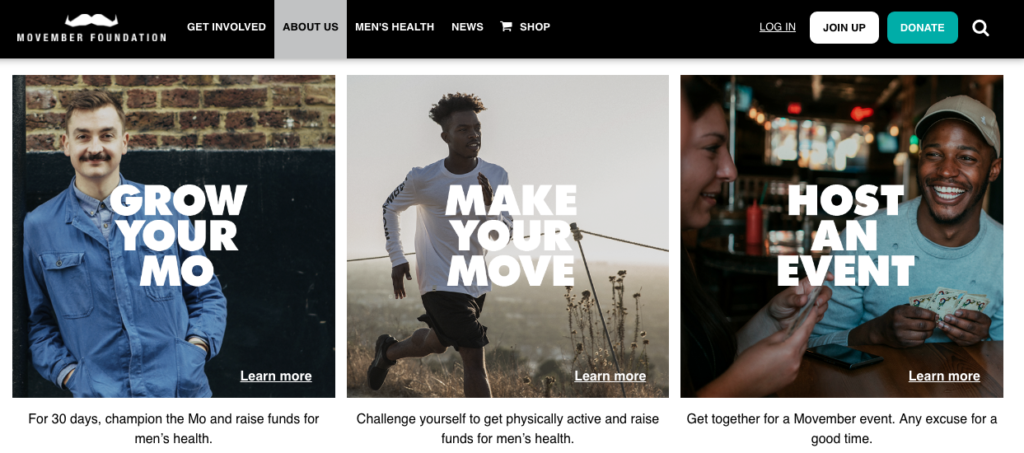

2 thoughts on “Charity Marketing – the Ultimate Guide”